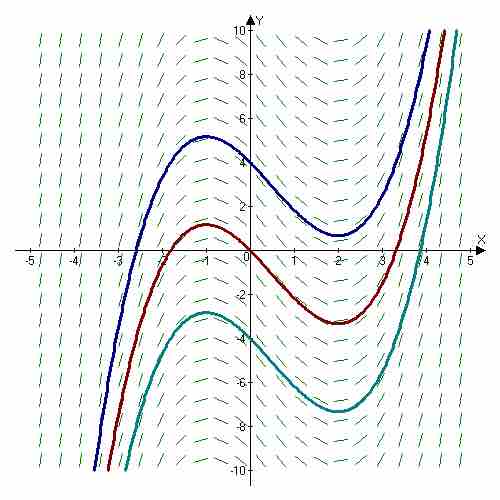Indefinite Integrals and Antiderivatives
As you remember from the atoms on antiderivatives,
For example, the function

Slope Field
The slope field of
Indefinite integrals exhibit the following basic properties.
The Constant Rule for Indefinite Integrals$\int cf(x)dx = c\int f(x)dx$
The Sum Rule for Indefinite Integrals
The Difference Rule for Indefinite Integrals
Definite Integrals and the Net Change Theorem
Integrating over a specified domain yields what is called a "definite integral" (in that the domain is defined). Integrating over a domain
Such a problem can be solved using the net change theorem, which states that the integral of a rate of change is the net change (displacement for position functions):
Basically, the theorem states that the integral of or